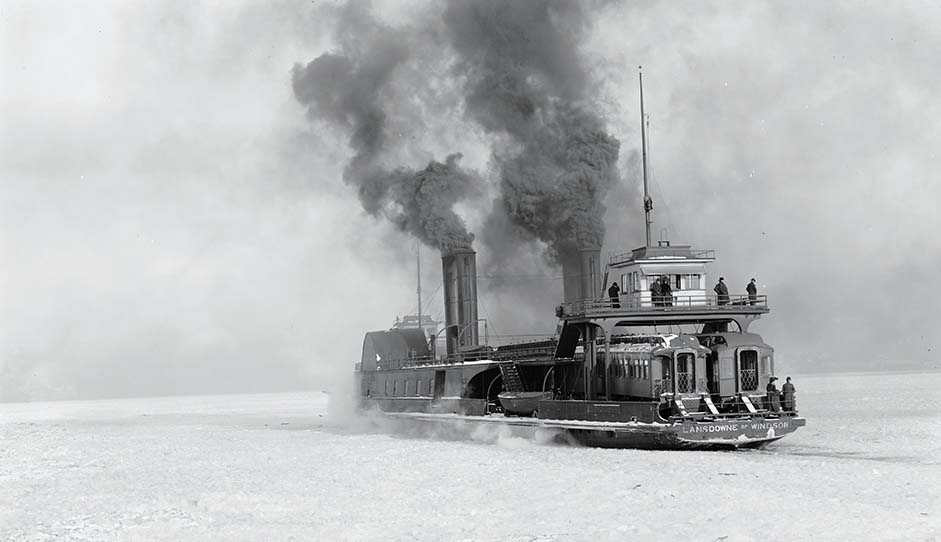The SS Landsdowne
Discover more about one of the most venerable vessels of the Great Lakes.

When the SS Lansdowne was put to sea from Detroit in 1884, it was the longest ship on the Great Lakes at 312 feet.
It wasn’t long before the ship’s size was dwarfed, but it would prove to be one of the most venerable vessels on the Great Lakes, if not the entire country.
The ship, named for Canada’s governor general at the time, Henry Petty‑Fitzmaurice, Marquess of Lansdowne, was commissioned by the Grand Trunk Railway and built by the Detroit Dry Dock Co. It had pilot houses at both ends and a set of parallel railroad tracks, which could accommodate up to six railroad cars, with as many as 300 passengers.
The metal-hulled ship proved especially useful during winter in navigating the ice-filled waters between Detroit and Windsor, Ontario — and enabled it to survive a couple early collisions. The ship was damaged a year after it was put to sea, colliding with the Clarion. Both vessels survived their damages.
A more serious crash occurred in 1899, when the Lansdowne struck the Morley, a steam barge loaded with 2,800 tons of coal. The Morley attempted its crossing to Detroit but sank. The Lansdowne returned to the Windsor dock and then sank. It was able to be raised and then returned to service.
The Lansdowne continued its regular commute between Detroit and Windsor through the 20th century. It outlived the company that built it (which became part of American Shipbuilding at the turn of the 20th century) and the railroad that commissioned it (Grand Trunk was absorbed into Canadian National Railroad in 1923). When passenger trains stopped running in the 1950s, it switched to freight service, a relic in its own time, the last sidewheeler on the Great Lakes.
The end of its nautical life came in 1970, as Canadian National switched to barges propelled by tugboats. But it wasn’t the end of the line for the Lansdowne. It was moored near the Renaissance Center in Detroit. A pair of skytop sleeping cars from the Milwaukee Road’s Olympian Hiawathan passenger train were put on the deck and the Lansdowne became a restaurant, known variously as the Lansdowne and as the Baja Beach Club. The restaurant closed in 1991, undone by a poor local economy, and the ship was towed first to dry docks in Lorain and then to Erie, Pennsylvania, with plans to revitalize it as a restaurant.
The plans never materialized, and the ship sunk following a fire on Christmas 2005. The railroad cars were taken to a museum in Minnesota, and its iron hull, which had survived for more than a century, met its end as scrap.






